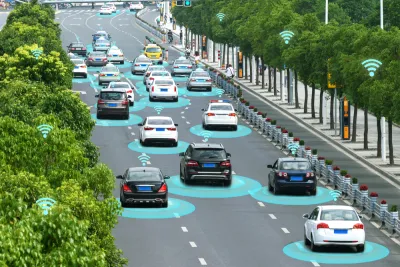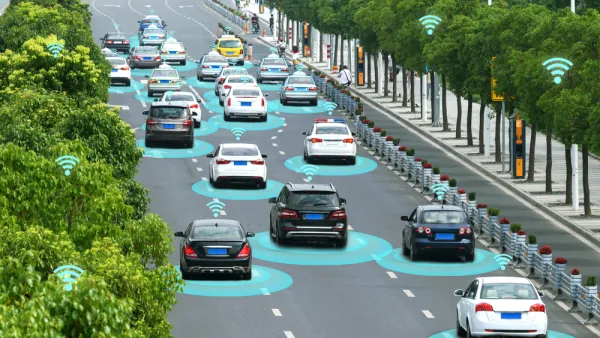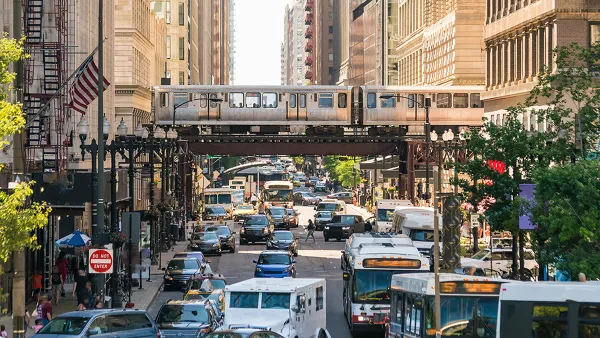How we pay for our roads will play a big role in what happens to cities when autonomous vehicles become common place in cities.

The advent of the car changed cities forever. The Economist now posits planners have a chance to change cities again with the advent of autonomous vehicles. "Urban freeways, commuter suburbs and mandatory parking requirements reshaped cities. Now AVs promise to transform them once again, undermining many car-centric assumptions made in the 20th century, opening up new possibilities and turning urban-planning debates upside down," according to an article in The Economist. But in some ways the arguments are the same. If drivers don't pay directly for the roads, autonomous cars could further spread out our cities.
"A switch to shared robotaxis could increase vehicle occupancy rates, reducing the number of vehicles needed to move people around and easing congestion," according to the article. On the other hand, it posits the potential issue of induced demand that might be created when people see the opportunity presented by newly open roads, something the author calls a "nightmare scenario."
The author suggests that the technology offers an opportunity for a more subtle form of pricing of roads "… taking account of time, place, vehicle type, number of riders, traffic levels and so forth, to maximise sharing and minimise congestion."
The piece takes a guardedly techno-optimistic view of the future, "…In retrospect, many drawbacks associated with cars in the 20th century arose from a failure to price their use properly. With appropriate pricing, AVs should be able to avoid many of those problems, giving urban planners and policymakers a much wider range of choices about how cities and transport systems could be structured." It remains to be seen whether future generations will be able to price their roads in more equitable ways than we did.
FULL STORY: A chance to transform urban planning

Analysis: Cybertruck Fatality Rate Far Exceeds That of Ford Pinto
The Tesla Cybertruck was recalled seven times last year.

National Parks Layoffs Will Cause Communities to Lose Billions
Thousands of essential park workers were laid off this week, just before the busy spring break season.

Retro-silient?: America’s First “Eco-burb,” The Woodlands Turns 50
A master-planned community north of Houston offers lessons on green infrastructure and resilient design, but falls short of its founder’s lofty affordability and walkability goals.

Test News Post 1
This is a summary

Analysis: Cybertruck Fatality Rate Far Exceeds That of Ford Pinto
The Tesla Cybertruck was recalled seven times last year.

Test News Headline 46
Test for the image on the front page.
Urban Design for Planners 1: Software Tools
This six-course series explores essential urban design concepts using open source software and equips planners with the tools they need to participate fully in the urban design process.
Planning for Universal Design
Learn the tools for implementing Universal Design in planning regulations.
EMC Planning Group, Inc.
Planetizen
Planetizen
Mpact (formerly Rail~Volution)
Great Falls Development Authority, Inc.
HUDs Office of Policy Development and Research
NYU Wagner Graduate School of Public Service




























